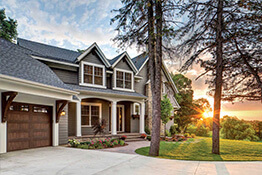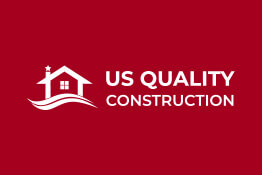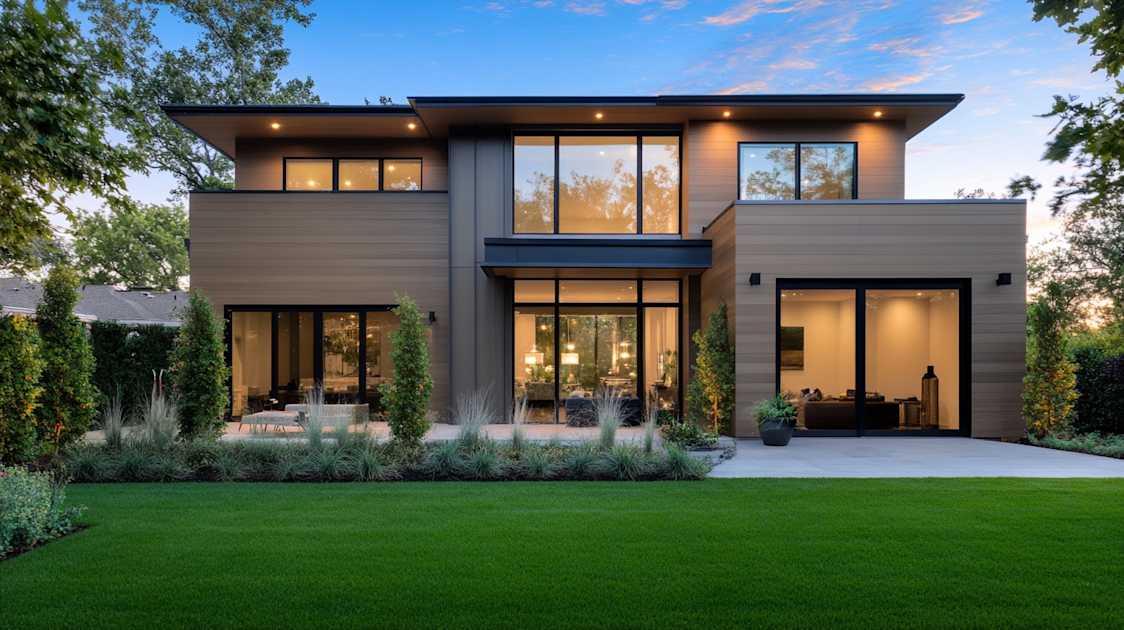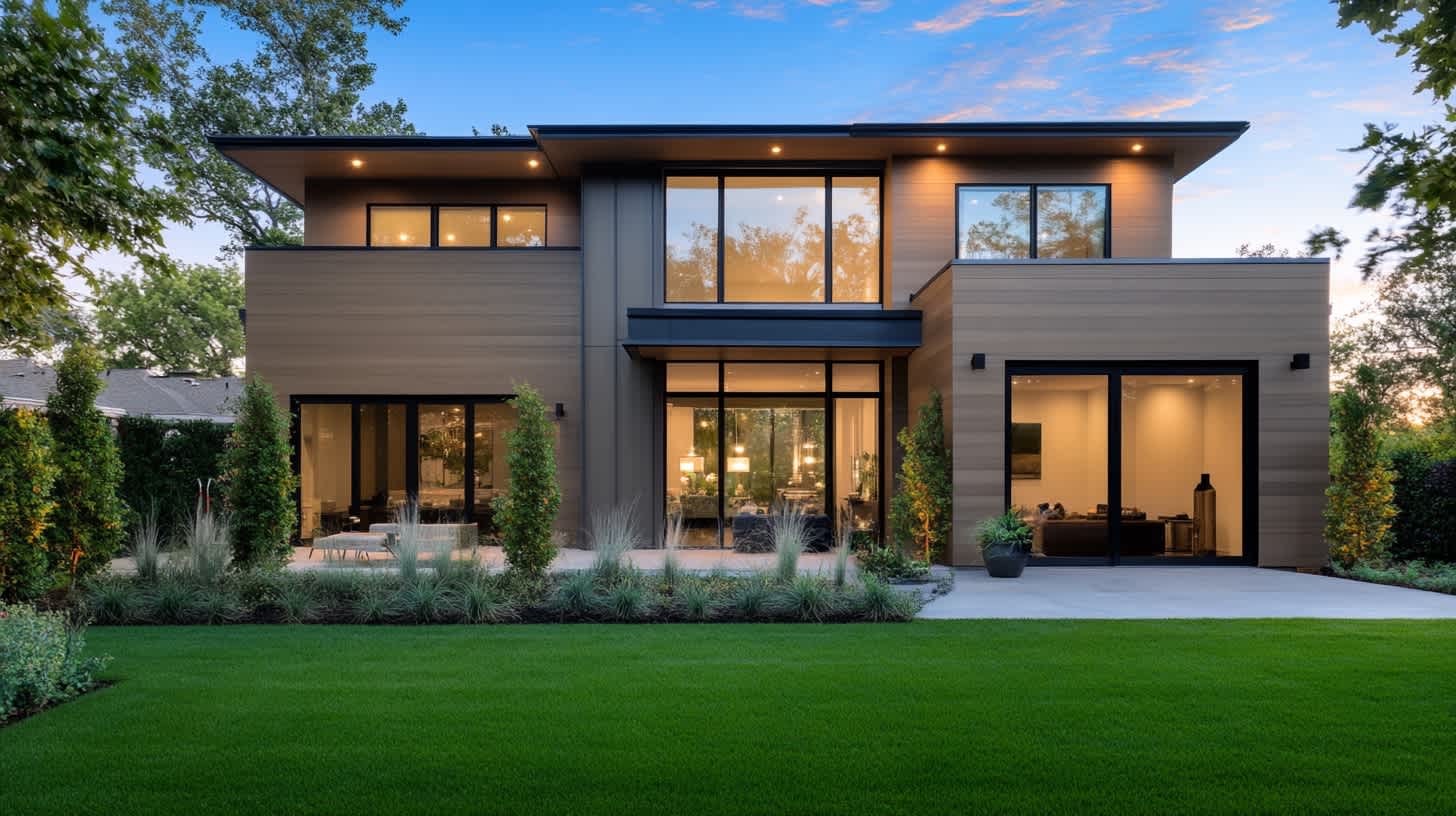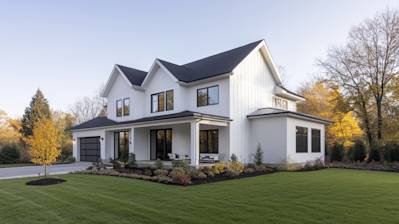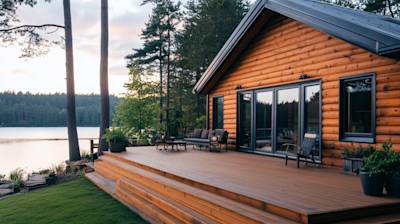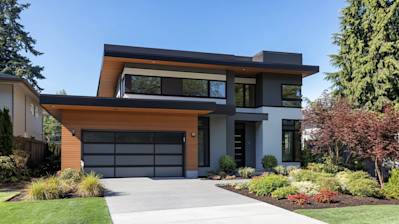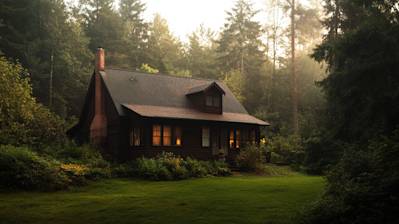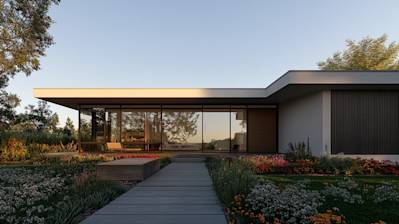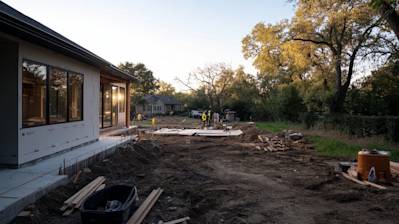When it comes to home building and improvement, choosing the right exterior siding can be a crucial decision. Among a plethora of options out there, engineered siding has carved a niche for its own and emerged as a top favorite among homeowners and builders alike. Let's dive deep into the world of this superior exterior finishing.
Understanding Engineered Siding
Engineered siding, also known as engineered wood siding, is a durable and aesthetic option for homes nationwide. It's a popular choice that mimics the natural appearance of traditional wood siding, without the common problems associated with solid wood like rotting, warping, and the need for regular maintenance.
To better understand engineered siding, one must first learn about its manufacturing process.
Manufacturing Process of Engineered Siding
This distinct type of siding is typically made from different types of wood fibers, bound together through a process known as "orienting", to form a composite material. The process is as follows:
Wood Chipping: The process begins with raw wood (bark removed) being broken down into chips.
Stranding: These chips are then reduced further into fine strands.
Drying: These strands are then dried to achieve a uniform moisture content.
Orienting: The dry strands are aligned in specific orientations and mixed with resins and wax.
Pressing: The mix is hot-pressed into panels under high pressure and temperature, which results in strong, durable, and waterproof siding.
Engineered siding is then surfaced with a realistic wood-look veneer and finished with a prime coat. The result is a sustainable, durable, and visually pleasing product that is resistant to damage and decay.
Key Features of Engineered Siding
Something that sets engineered siding apart from its competition is its unique set of features:
- Aesthetic Appeal: Resembling real wood closely, engineered siding offers great visual appeal. It comes in various styles and finishes, mimicking a range of wood types, including cedar, oak, and pine.
- Durability: With resistance to rot, termites, and severe weather conditions, it is designed for durability and long lifespan.
- Ease of Installation: Lighter than solid wood, and manufactured in uniform sizes, it is easier and faster to install.
- Low Maintenance: Apart from being highly resistant to rot and insect damage, it does not require regular painting or staining, saving you maintenance cost and effort.
Sustainability and Eco-Friendliness of Engineered Siding
In this era of increasing ecological consciousness, homeowners and builders are turning towards more sustainable and eco-friendly options. Engineered siding trumps in this regard as it uses fewer trees in manufacturing compared to traditional wood siding.
Most manufacturers of engineered wood siding use wood sourced from fast-growing, underutilized, and less-expensive wood species, thereby reducing the pressure on the ecosystem. Moreover, the efficient manufacturing process also results in less waste as almost every part of the log is utilized.
Cost-effectiveness of Engineered Siding
While initial installation costs might be slightly higher compared to vinyl or aluminum siding, in the long run, engineered siding pays for itself—thanks to its durability and low maintenance requirements. Given its impressive lifespan, it also adds value to your home and can provide a good return on investment when selling.
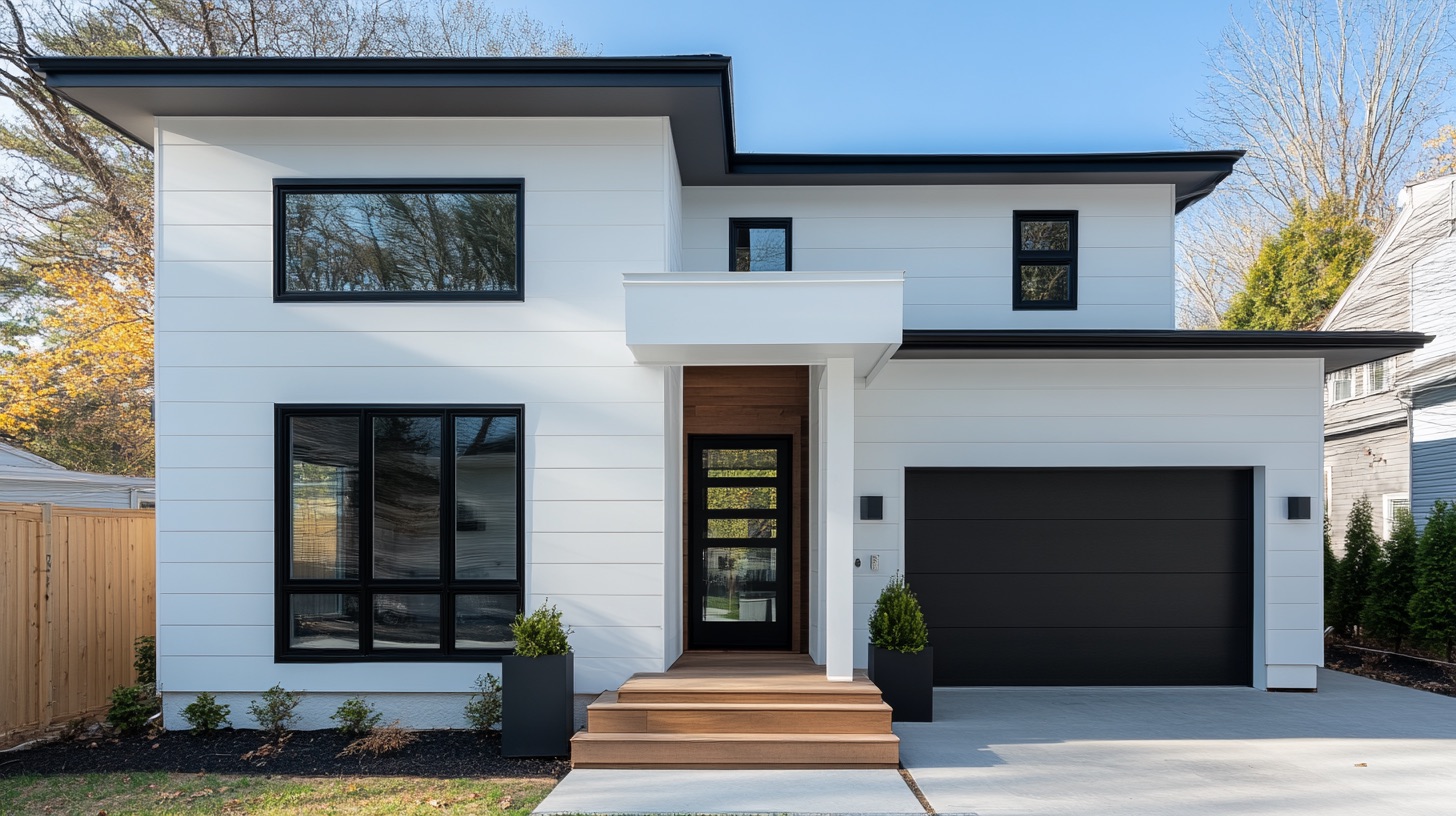
Frequently Asked Questions about Engineered Siding
Can I Paint Engineered Siding?
While engineered siding comes prefinished in a variety of colors, it can also be painted if you desire a new color or fresh look. However, it’s essential to use a high-quality acrylic latex paint and prep the surface correctly to ensure the best finish. Keep in mind, painting engineered siding might void the product warranty, so it's always best to check with your manufacturer first.
How Does Engineered Siding Withstand Different Weather Conditions?
Engineered siding is designed to stand up to various weather conditions, including heavy rain, high winds, and extreme temperature changes. It resists warping, cracking, and splitting, even under intense summer heat or freezing winter weather. In areas prone to high humidity or heavy precipitation, engineered siding performs exceptionally well due to its high resistance to water damage.
How Long Does Engineered Siding Last?
Typically, with proper maintenance, engineered siding can last between 20 to 30 years or longer. Many factors can influence the lifespan of engineered siding, such as the quality of the product, installation standards, local climate, and how well the siding is maintained. High-quality engineered siding often comes with warranties that guarantee the product's durability and longevity.
How Much Does Engineered Siding Cost?
The cost of engineered siding can vary based on the product’s quality, the brand, the region, and the installation costs. On average, though, engineered siding tends to be a cost-effective option when compared with other forms of siding. While the initial cost might be higher than that of traditional wood siding, the reduced need for maintenance and repair usually makes it a more economical choice in the long run.
What Maintenance Does Engineered Siding Require?
One of the major benefits of engineered siding is its low maintenance requirements. Unlike traditional wood, engineered siding does not need regular painting or staining to maintain its appearance. It simply needs to be washed with a mild detergent and a hose to remove dirt and debris. However, it may need to be repainted or re-stained after several years, depending on the manufacturer's recommendations.
Is Engineered Siding Resistant to Pests?
Yes, engineered siding is made to be highly resistant to common pests, including termites and carpenter ants. This is because the siding is treated with special chemicals that deter these pests. In addition, engineered siding does not attract pests like wood siding does, which makes your home less susceptible to potential pest damage.
How Is Engineered Siding Installed?
Engineered siding is typically installed by certified professionals using specialized tools and techniques. It can be cut and installed like wood, nailed directly to your home. Proper installation is crucial for engineered siding to effectively resist weather and pests and provide its known insulating properties.
Can Engineered Siding Increase My Home's Resale Value?
Yes, installing engineered siding can increase your home's resale value. Because of its incredible durability and visual appeal, engineered siding can make a significant impact on a home's curbside appeal, often making it more attractive to potential buyers. Plus, the knowledge that the new homeowners won't have to replace the siding soon after purchase can be a significant selling point.
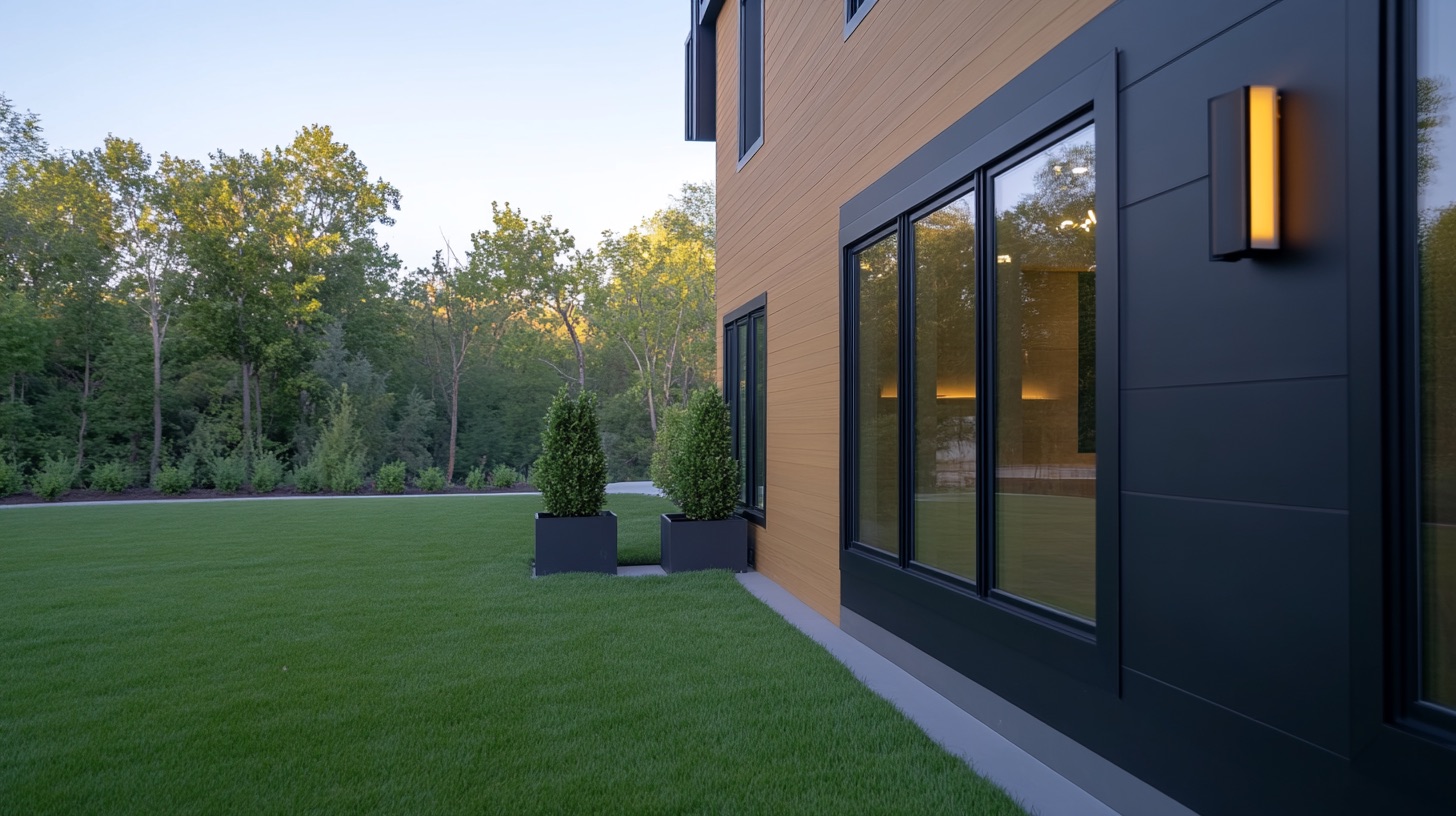
Pros of Engineered Siding
Engineered siding has gained popularity over traditional wood siding due to its numerous benefits. Let's delve into the specifics.
Durability
Longevity
Engineered siding is engineered (quite literally) to outlast traditional wood or vinyl siding. This means it can handle the rigors of extreme weather conditions, be it baking heat, freezing cold, or incessant rain, and still come out looking new. Going with engineered siding is an excellent long-term choice as it can withstand the test of time and element.
Resistance
Engineered wood siding is designed to resist wood-boring insects, fungal growth, and decay. Unlike its natural counterpart, this type of siding gives your home dependable protection without the susceptibility to pesky termites or rotting. It's basically a fortress against all the pesky invaders that are out to compromise your home's structural integrity.
Aesthetics
Variety
Engineered siding comes in a diverse range of colors, textures, and styles. Whether you fancy a rustic charm, contemporarily chic, or an elegant traditional look, there's bound to be an engineered siding style that will fit your aesthetic preferences. You're not just settling for durability; you're getting a good look to go with it.
Similarity to Real Wood
Despite being a human-made material, engineered siding can look deceptively similar to real wood. The attention to the grain details, color variations, and texture can fool even the discerning eye. And the best part? You get this visual appeal without the demanding maintenance real wood requires.
Cost-effectiveness
Engineered wood comes with significant cost advantages.
Reduced Maintenance Cost
Unlike real wood, engineered siding doesn't need regular painting or staining. It can hold onto its look for years, saving you on maintenance costs you would have otherwise part with if you went with traditional wood.
Longer Replacement Cycles
Engineered siding's durability translates into longer replacement cycles. Over time, this impacts costs, as the need to replace siding is less frequent than using an alternate material would seal the deal for those looking for long-term saving.
Cons of Engineered Siding
Despite engineered siding's many advantages, it also comes with its share of challenges. Here's what you should expect.
Maintenance
Paint Chipping
Though engineered siding holds onto its color for an extended period, the paint can chip off over time due to regular wear and tear. The process of repairing the paint and making it look seamless can be quite painstaking.
Installation
Needs Professional Expertise
Engineered siding installation isn't for everyone. It's best handled by professionals due to its weight and the precision needed in installation to prevent water seepage or improper sealing, increasing the project's overall cost.
Impact on Environment
Not Eco-friendly Viable
The manufacturing process of engineered siding can involve the use of chemicals and non-renewable materials that may not be very environmentally friendly. It may not suit those looking to reduce their carbon footprint and use sustainably sourced materials for their homes.
Damage from Moisture
Potential Moisture Damage
While engineered siding can resist a lot of damage, exposure to high levels of moisture for extended periods can lead to swelling and deterioration, a significant problem in areas with high rainfall. Additionally, any cracks or gaps in the siding can allow water to seep in, resulting in internal damage.
Fire Safety
Not Fire-resistant
Unlike other materials like brick or fiber-cement, engineered wood siding isn't fire-resistant. It can provide fuel to any fire accidents, making it a less desirable option for homes in fire-prone areas.
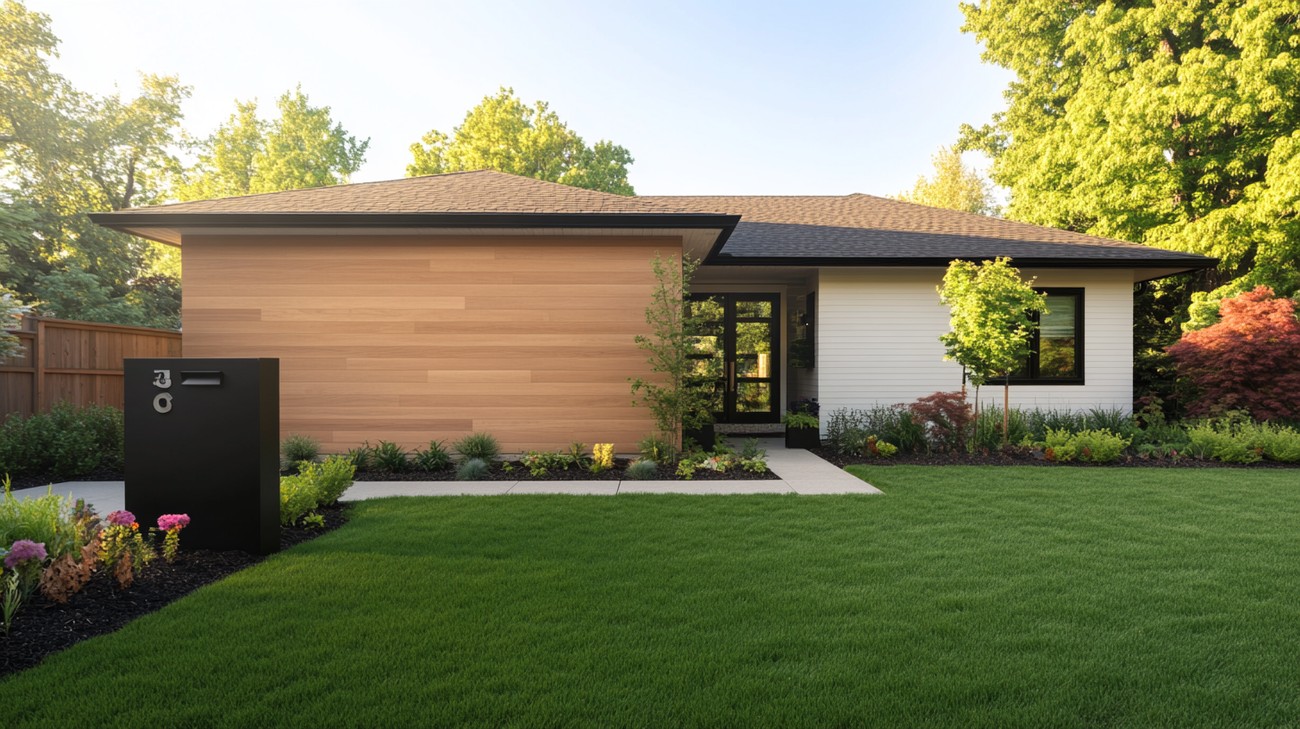
Myths and Misconceptions About Engineered Siding
Myth 1: Engineered Siding is Not Durable
Reality
One of the most common misconceptions about engineered siding is that it is less durable than traditional wood siding. This is not accurate. In fact, engineered siding is designed to withstand severe weather conditions, resist decay and insects, and to last longer than traditional siding materials. The manufacturing process involves bonding wood fibers or chips together under high heat and pressure, making it denser and stronger than natural wood.
Myth 2: Engineered Siding Looks Cheap
Reality
Some people believe that engineered siding can’t mimic the look of real wood and thus ends up looking cheap or artificial. This couldn't be further from the truth. Technological advances in the manufacturing process have made it possible for engineered siding to effectively mimic the look of various types of traditional wood siding, including cedar shingles, clapboard, and board and batten siding. Additionally, many engineered siding products come pre-primed or pre-finished in a wide range of colors and finishes, allowing homeowners to customize the look of their homes to their liking.
Myth 3: Engineered Siding is Not Environmentally Friendly
Reality
Contrary to what some believe, engineered siding is actually quite environmentally friendly. It is typically made from wood by-products such as wood chips and sawdust, making use of materials that might otherwise be wasted. Furthermore, the manufacturing process requires less energy compared to other types of siding material such as vinyl or aluminum, reducing its carbon footprint.
Myth 4: Engineered Siding Requires Constant Maintenance
Reality
Like any siding material, engineered siding requires some basic maintenance to keep it looking its best, like regular cleaning. However, it is a misconception that it requires constant, labor-intensive maintenance. In comparison to traditional wood siding, engineered siding does not need to be stained or painted regularly because the color goes through the material, not just on the surface. This provides a longer-lasting finish that won’t chip or fade over time.
Myth 5: Engineered Siding is More Expensive than Other Types of Siding
Reality
While it's true that the initial cost of engineered siding can be higher than some other types of siding, it's important to consider the long-term costs. Engineered siding tends to last longer than traditional wood siding and requires less maintenance, potentially saving homeowners a significant amount of money over time. It is also typically less expensive to install than brick or stone siding, making it a cost-effective choice for many homeowners.
Myth 6: All Engineered Siding is the Same
Reality
There is a wide variety of engineered siding products available, and they are not all created equal. Variables such as the type and quality of the wood used, the manufacturing process, the treatment against decay and insects, and the finish can all make a significant difference in the durability, appearance, and longevity of the siding. It's important to do your research and choose a high-quality product from a reputable manufacturer.
By correcting these common misconceptions about engineered siding, homeowners and builders can make more informed decisions when selecting the right siding material for their needs. Despite the myths, engineered siding is a durable, attractive, and cost-effective option that can withstand the elements and stand the test of time.
Summary
So, there you have it! Engineered siding really does stack up when compared to its alternatives in the siding world. It's not only incredibly durable and resistant to the elements, but it also comes in a variety of styles and colors. You can have the look of authentic wood without the hassle of maintenance. Also, it's worth noting that it may be a bit more expensive initially, but the long-term benefits and lower maintenance costs will pay for those additional upfront costs.
Engineered siding is definitely a great consideration for any homeowner or renovator. Its resilience to various weather conditions and termite infestation adds value to properties. Furthermore, the engineered material can be made to resemble other high-end materials like cedar tree siding, bringing a touch of elegance to your home while remaining cost-efficient. Additionally, there’s the convenience of easy installation that can be done quickly, lessening the disruption to your daily life.
Lastly, let's not forget about the environmental aspect. Engineered siding is typically made from recycled materials, making it a green choice. It's possible to get a beautiful, durable home exterior while lowering your carbon footprint. Overall, engineered siding is a versatile, eco-friendly, and cost-effective solution for those looking to give their homes a new and improved look. Just goes to show that you really can have your cake and eat it too!
About US Quality Construction of Columbus
At U.S. Quality Construction of Columbus, we're more than just a construction company in Columbus, OH, we're your expert and reliable partners in transforming spaces and creating value. Our professionally trained and certified team brings craftsmanship, innovative design, and honest hard work in every project we undertake. Imperative to our process is understanding your dreams and vision to deliver a final result that not only aligns with your expectations but exceeds them. We perform a variety of services, from home renovations to new commercial projects, always with the dedication to quality, efficiency, and respect for your budget. Trust U.S. Quality Construction of Columbus to bring life and value to your construction projects.
Tags: siding, construction, home improvement,
